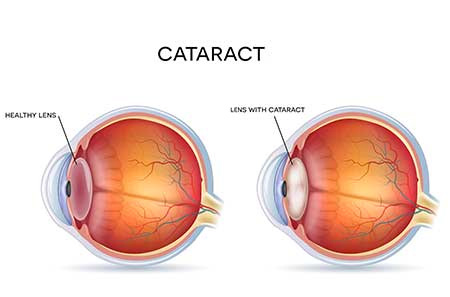Phacoemulsification With Intraocular Lens (IOL) Implant
Cataract refers to the clouding of all or part of the focusing lens of the eye. This results in blurred or distorted vision.
The only effective way to treat cataract is to remove the
clouded lens through surgery and replace it with a clear
Intraocular lens (IOL) to restore your vision.
Modern surgical techniques allow your cloudy lens (cataract)
to be removed quickly and painlessly through a 2.5-3mm
micro-incision. The lens is broken into small fragments by
high frequency ultrasound waves (phacoemulsification)
delivered from a tiny ultrasound probe that is inserted into
the eye. These small fragments are then aspirated out of the
eye.
Once the lens is removed, it is replaced with an intraocular lens (IOL) implant which restores vision to the eye. The tiny incision is self -sealing with no stitches required.
Micro-incision, no stitch surgery has many benefits:
- Short surgery time -15-20 minutes only.
- Much gentler to your eye, less inflammation.
- Less surgically-induced astigmatism with better quality vision.
- Rapid visual recovery with a quick return to your normal activities.
The operation is a day- surgery procedure. No hospitalisation is needed.





